From Russia with Love, Terence Young, 1963
"They dance for him, they yearn for him, they die for him …" From Russia with Love is not only arguably the best of the Bond films, it set the template for all that followed, right down to the corny one-liners. This is Tatiana, the Russian double-agent love interest succumbing to Sean Connery's charms: "The mechanism is… Oh James… Will you make love to me all the time in England?" "Day and night, darling… Go on about the mechanism…" The film was shot when the city's population was less than two million (it has mushroomed to more than 13 million today), and it's a magic carpet ride back to a time when Istanbul teemed with hamals, huge American cars and natty post-war Renaults. Incidentally, the colourful Gypsy neighbourhood in the film, Sulukule, has just been razed, victim of the city's latest round of wrong-headed gentrification.
Beyazit, Sulukule, Yerebatan Sarayi (Basilica cistern)
Tarzan in Istanbul/Dracula in Istanbul/Kilink in Istanbul, various directors, 1952-67
Tarzan in Istanbul? Oh yes, and it gets even stranger. In their superhuman efforts to keep the public entertained, the moguls who worked in "Turkey's Hollywood", on Yeşilçam Street in Beyoğlu, produced hundreds of sometimes inspired and sometimes appalling "tribute" films. These are three of the best. Tarzan in Istanbul is actually very good, and Kilink, a suavely evil skeleton with an eye for the ladies (a rip-off of an Italian comic book character), deserves his own Hollywood franchise. My favourite is his titanic struggle with Super-Adam, whom you might recognise as Superman. Drakula, too, has a great local twist, the vampire dispatched with a copy of the Koran rather than a cross. The fact Dracula was based on Vlad Tepes, who liked nothing better than impaling Turks, added still more spice. And they didn't stop there. There is Turkish Star Wars (which took action hero camp to new heights of absurdity), Turkish Star Trek, Turkish Rocky, and, of course, Turkish Rambo.
Yeşilçam Sokak, Beyoğlu
Topkapi, Jules Dassin, 1964
The daddy of all heist films, in which "Swiss master criminal" Maximilian Schell, Peter Ustinov, Robert Morley and Melina Mercouri – who was the muse for Dassin's Oscar-winning Never On Sunday, and later his wife – have terrific fun trying to steal the emerald-encrusted dagger of the hunchback Sultan Mahmud I from the Topkapi palace museum. Mission: Impossible, the Pink Panther, and Ocean's Eleven, Twelve and Thirteen all owe their jokey breeziness to Dassin and his merry band, although few have bettered them. Great score, too, from Manos Hatzidakis.
Topkapi palace
Midnight Express, Alan Parker, 1978
What little of it was shot in Istanbul (Malta and Greece largely stood in for the city) was done secretly, but like Paris and dog shit, Istanbul will be forever associated with hell-hole jails, thanks to Alan Parker and his scriptwriter Oliver Stone. They took major liberties with Billy Hayes' memoirs of a failed drug runner – not that anyone is pretending that Turkish prisons were or are Butlins on the Bosphorus. But even Hayes thought they went too far, and made an apology to the Turkish people when he finally returned to Istanbul in 2007. Stone also had the good grace later to apologise – his head was still in Vietnam (perhaps the Turks were just another type of gook). That said, it remains a great piece of cinema. Ironically, Hayes' real escape was far more exciting, slipping off Imrali island, Turkey's Alcatraz – where Abdullah Ocalan, the head of the Kurdish PKK, is currently the sole prisoner, and where former prime minister Adnan Menderes was hanged by the military in 1961.
Sagmalcilar prison, Bakirköy mental hospital.
Uzak (Distant), Nuri Bilge Ceylan, 2002
Not just the best film ever made in the city, but probably the finest Turkish film of all time. Shot in wintry Istanbul, it's a marvellous and richly Turkish meditation on city and country, seen through the divide between two distant cousins – a young bumpkin who arrives as the unwelcome guest of a city photographer who is used to descending on his family in the sticks and demanding hospitality. As always, Ceylan cast his family and friends, and shot the film in and around his apartment in Cihangir. His cousin Mehmet Emin Toprak, a rural factory worker, shared the best actor award at Cannes with Muzaffer Ozdemir, who wasn't an actor either. By then the astonishing Toprak was already dead, having fallen asleep at the wheel of the second-hand car he bought from his appearance fee. He was 28.
Cihangir
Politiki Kouzina (A Touch of Spice), Tassos Boulmetis, 2003
If Turks enjoy anything more than food and football, it is crying their eyes out at a good weepie. The Greek film Politiki Kouzina, which translates as "Constantinople cooking", briefly united Greeks and Turks around a box of Kleenex and launched a string of soap operas in both countries in which a Greek girl/boy falls in love with a Turkish boy/girl with predictably complicated consequences. The story of a young boy forced to leave Turkey in one of the last deportations of the city's age-old Greek population, in the 1960s, hit a raw nerve in both countries. Boulmetis, who wrote and directed the film, was born in Kadiköy's marvellous market, on the Asian side of the city, before his family were forced to leave for Athens, where he was "treated as a Turk". In other words, not unlike a Kurd in Istanbul … Yesim Ustaoglu's Journey to the Sun (1999) gives a good idea of what that can be like. Big strides have since been made in the way "our dark-skinned brothers" are treated, but there's still a long way to go for the city's biggest minority.
Kadiköy market and nearby Haydarpaşa station
Hamam, Ferzan Ozpetek, 1997
Dismissed as gay orientalist tosh by its critics, Hamam is the most sensual film shot in the city – not just in its tender telling of the relationship between an Italian who inherits an ancient hamam and a young Turkish man, but in the way it shows Istanbul's seductive mix of grime and glamour. For a film that broke so many taboos, it looks like it will stand the test of time, particularly Mehmet Günsür's wonderfully understated performance. Turkey has a rich LGBT history, and is reputed to have more transvestite and transgender people than any other developed country except Brazil. Gay life in Turkey often confounds the cliches, with transvestites once marching in full veil to protest at how young, covered women are still excluded from some universities.
Beyoğlu
Crossing the Bridge: The Sound of Istanbul, Fatih Akin, 2005
If only all music documentaries could be like this. Fatih Akin's passionate survey of Istanbul's musical melting pot grabs you by the lapels from the first shot and never lets go. It kicks off at the Grand Hotel Londres in Beyoğlu, where Akin's equally frenetic feature Head-On (2004) finished with a love scene worthy of Last Tango in Paris. All, or almost all, cultural life is here, from Orhan Gencebay, a cinema action hero as well as musical genius, to gecekondu (hastily assembled squatter houses) shanty-town rappers to the sublime Roma clarinetist Selim Sesler. Akin's The Edge of Heaven (2007) could also have easily made the top 10. Needless to say, the soundtracks of all three films are sensational.
Grand Hotel de Londres, Beyoğlu, Tarlabaşi
Somersault in a Coffin, Dervis Zaim, 1996
The Cypriot-born director Dervis Zaim opened the way for a world-beating new wave of Turkish cinema – Ceylan, Zeki Demirkubuz, Semih Kaplanoglu et al – with this heartbreaking yet very funny story of Istanbul deadbeats, shot mostly in a tea shop below the huge second bridge over the Bosphorus. Hangdog Ahmet Ugurlu looks like a lost character from traditional Turkish shadow theatre, and the absurd tragedy of the piece, particularly the theft of the peacock from the grounds of the sultan's old fortress, found echoes in more commercial hits such as Istanbul Tales (2005).
Rumeli Hisari, Fatih Sultan Mehmet bridge
My Only Sunshine (Hayat Var), Reha Erdem, 2008
Erdem has made better films but no one has ever shot the Bosphorus in all its moods like he did here. This is a coming-of-age story, of a girl growing up with her father and dying grandfather in a shack in a creek once known as "the sweet waters of Asia". Once this was Istanbul's pleasure ground, where harem women would be brought by caique (a traditional Greek boat) and bullock cart to picnic and be entertained by Jewish comedians and acrobats. Now the girl's father uses it as a base for smuggling women to the huge supertankers that pass through the straits every day. For a more typical middle-class take on the same theme, Kutlug Ataman's excellent 2 Girls (2005) takes some beating.
Kandilli, Göksu (The Sweet Waters of Asia)
Fiachra Gibbons is a former Guardian arts correspondent and Turkey specialist
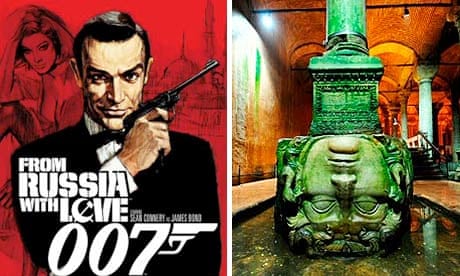



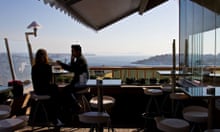
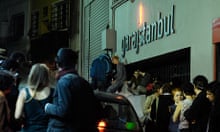
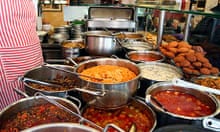
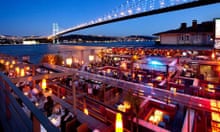
Comments (…)
Sign in or create your Guardian account to join the discussion